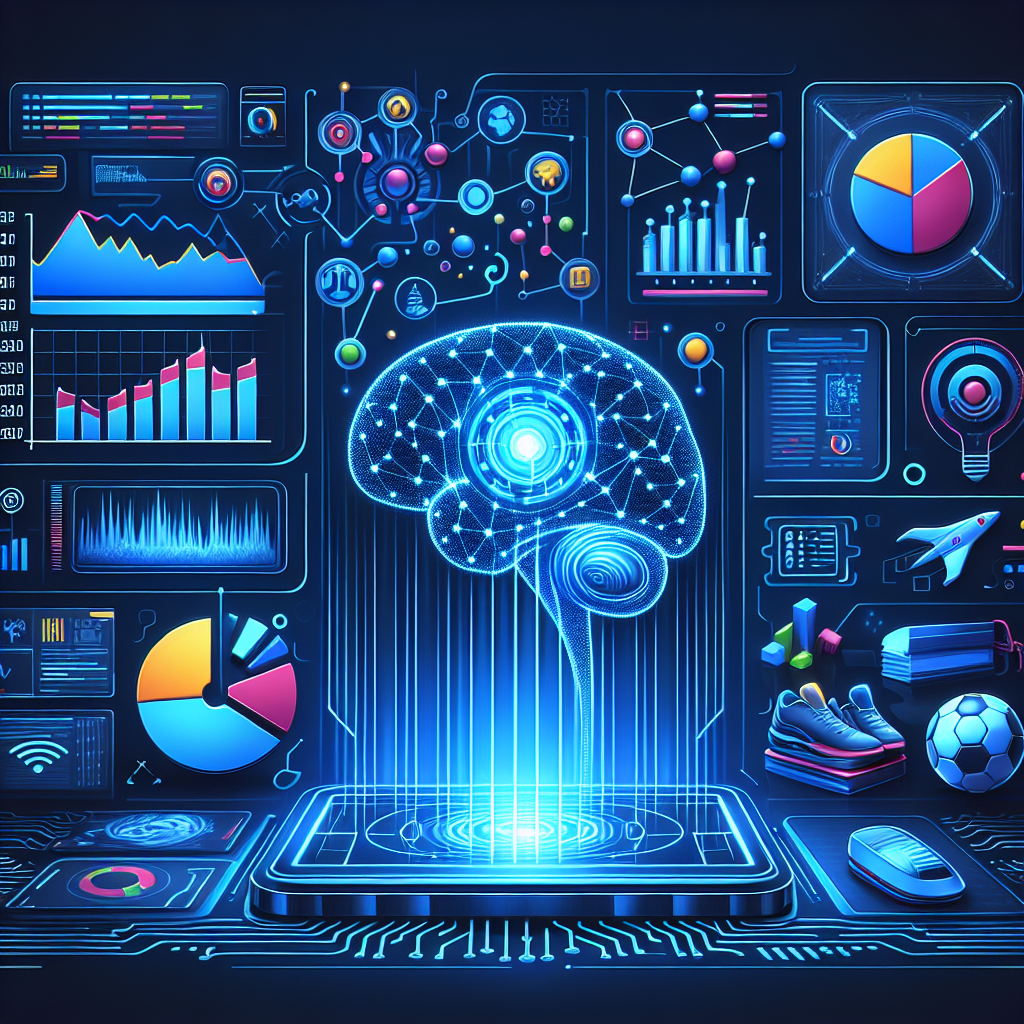Introduction
Artificial intelligence (AI) is transforming many industries, and sports is no exception. In recent years, AI has been used to revolutionize the way sports data is visualized and analyzed. From player performance metrics to game strategy, AI is helping teams and fans better understand and interpret the vast amount of data generated in the world of sports.
The Future of Sports Data Visualization
AI has the potential to completely change the way sports data is visualized. Here are some ways in which AI is shaping the future of sports data visualization:
1. Real-time analytics: With the help of AI algorithms, sports teams can now access real-time analytics that provide valuable insights into player performance, game strategy, and opponent analysis. This allows coaches and players to make informed decisions on the fly, leading to better outcomes on the field.
2. Predictive analytics: AI can also be used to predict future outcomes in sports. By analyzing historical data and current trends, AI algorithms can forecast game results, player performance, and even career trajectories. This can help teams make better decisions in terms of player recruitment, game strategy, and training programs.
3. Interactive dashboards: AI-powered data visualization tools can create interactive dashboards that allow users to explore and analyze sports data in a user-friendly way. Fans can access player statistics, game highlights, and other relevant information with just a few clicks, making the viewing experience more engaging and informative.
4. Virtual reality: AI can also enhance the sports viewing experience through virtual reality (VR) technology. Fans can immerse themselves in the game by wearing VR headsets that provide a 360-degree view of the action on the field. This allows fans to feel like they are right in the middle of the game, enhancing their overall enjoyment and engagement.
5. Automated reporting: AI can automate the process of generating sports reports, saving time and resources for sports analysts and journalists. AI algorithms can analyze data, identify key insights, and create visually appealing reports that can be easily shared with team members, fans, and media outlets.
6. Performance tracking: AI can help track and analyze player performance metrics in real-time. Wearable devices equipped with AI algorithms can monitor player movements, heart rate, and other vital signs, providing coaches with valuable information on player fitness and fatigue levels. This can help prevent injuries and optimize player performance on the field.
FAQs
1. How is AI used in sports data visualization?
AI is used in sports data visualization to analyze large volumes of data, identify patterns and trends, and present the information in a visually appealing way. AI algorithms can process data from various sources, such as player statistics, game footage, and social media, to provide valuable insights that can help teams and fans better understand and interpret sports data.
2. What are the benefits of using AI in sports data visualization?
Using AI in sports data visualization has several benefits, including:
– Real-time analytics that provide instant insights into player performance and game strategy.
– Predictive analytics that forecast future outcomes and trends in sports.
– Interactive dashboards that engage fans and provide them with relevant information.
– Virtual reality technology that enhances the sports viewing experience.
– Automated reporting that saves time and resources for sports analysts and journalists.
– Performance tracking that helps optimize player fitness and prevent injuries.
3. How can fans benefit from AI in sports data visualization?
Fans can benefit from AI in sports data visualization by gaining access to a wealth of information and insights about their favorite teams and players. AI-powered tools can provide fans with real-time updates, interactive dashboards, and virtual reality experiences that enhance their overall viewing experience. Fans can also use AI-generated reports and predictions to better understand the game and make informed decisions, such as placing bets or participating in fantasy sports leagues.
4. Are there any challenges associated with using AI in sports data visualization?
While AI has the potential to revolutionize sports data visualization, there are some challenges that need to be addressed. These include:
– Data privacy and security concerns, as AI algorithms require access to large amounts of sensitive data.
– Bias in AI algorithms that may lead to inaccurate predictions or insights.
– Integration with existing systems and technologies, as AI tools need to be compatible with other software and hardware.
– Cost and resource constraints, as implementing AI in sports data visualization can be expensive and require specialized skills.
Conclusion
AI is reshaping the future of sports data visualization by providing teams and fans with valuable insights and interactive experiences. From real-time analytics to virtual reality technology, AI is revolutionizing the way sports data is analyzed and presented. By leveraging the power of AI, sports organizations can gain a competitive edge, while fans can enjoy a more engaging and informative viewing experience. As AI continues to evolve, the possibilities for sports data visualization are endless, promising an exciting future for the world of sports.

